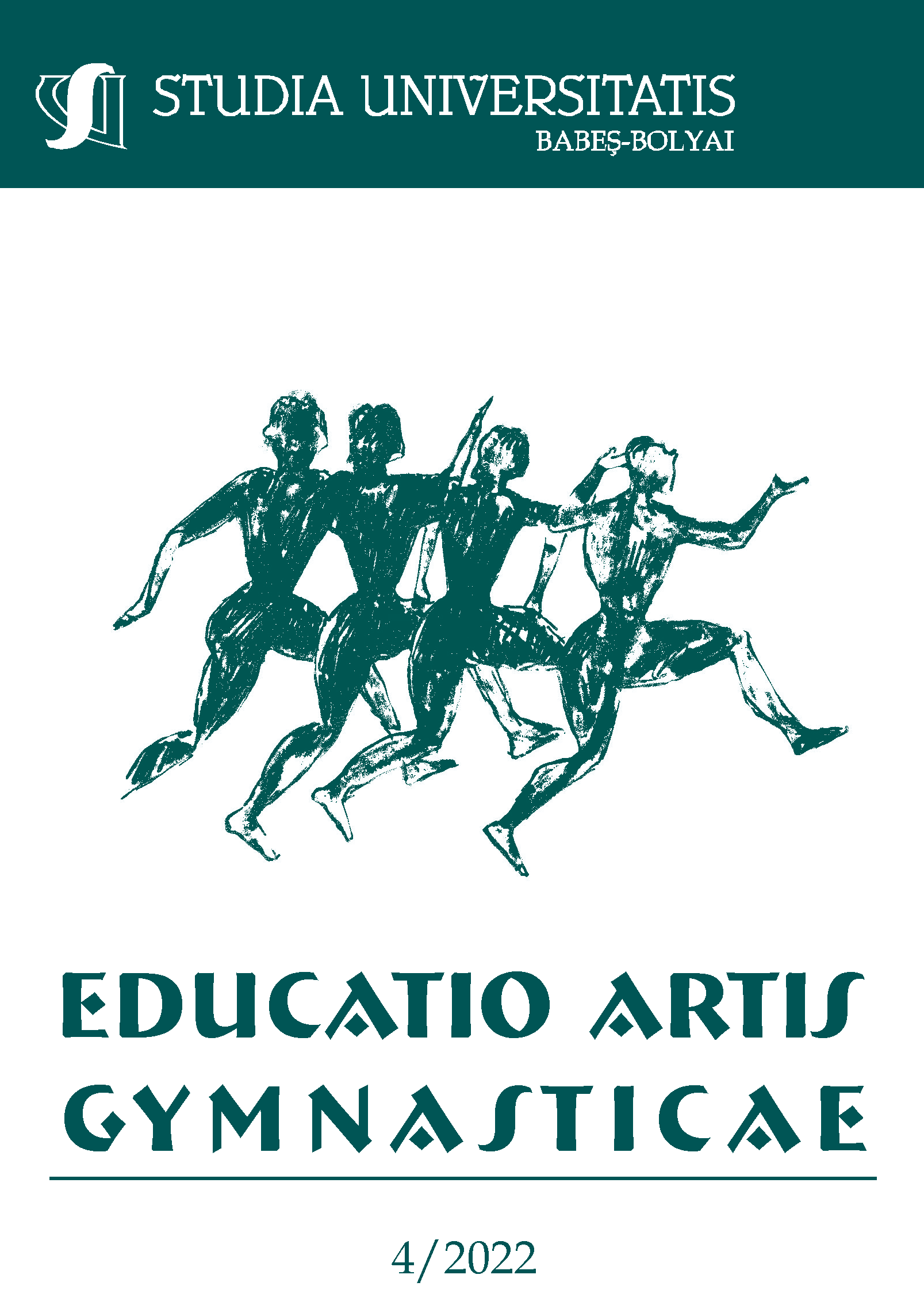THE RELATIVE AGE EFFECT IN JUNIOR FEMALE BASKETBALL PLAYERS
DOI:
https://doi.org/10.24193/subbeag.67(4).44Keywords:
relative age effect, women’s basketball, performance, successAbstract
Introduction: Sports activity interferes with physiological growth, adaptability accelerating and perfecting structural, functional and mental differentiation. The performance model is dependent on the total capacity of the players, on the psycho-social system resulting from the perfection of the executive functions, of the morphological, physiological, informational and decisional subsystems. Objective: The objectives underlying this work are the discovery and determination of the relative age effect (RAE) that leaves its mark on the system of failure or success in the lives of athletes, basketball players. By following the birth months of the athletes of a certain year, we try to prove that there is a close connection between the age advance in the life of certain athletes and their career success. The premise of the study is to analyze the impact of the RAE effect in the U16, U18 and U20 categories of the Romanian junior women’s basketball teams. Material and method: In order to demonstrate a connection within this subject, the method used was the structuring of sportswomen in several age categories and the analysis of their results. Results: According to the conducted study, the existence of the relative age effect among the selected ones is found, but not in a way that would suggest those born in the first months of the year would have a substantial advantage. Conclusions: The results confirm the fact that there is a possibility for the younger ones to evolve with efficiency similar to their older colleagues.
References
Barnsley, R. H., Thompson, A. H., & Barnsley, P. E. (1985). Hockey success and birthday: The relative age effect. Can Assoc Health Phys Educ Recreation J; 51: 23-8.
Delorme, N., & Raspaud, M. (2009). The relative age effect in young French basketball players: a study on the whole population. Scandinavian journal of medicine & science in sports, 19(2), 235-242.
Fumarco, L., Gibbs, B. G., Jarvis, J. A., & Rossi, G. (2017). The relative age effect reversal among the National Hockey League elite. PloS one, 12(8), e0182827.
García, M. S., Aguilar, Ó. G., Romero, J. J. F., Lastra, D. F., & Oliveira, G. E. (2014). Relative age effect in lower categories of international basketball. International review for the sociology of sport, 49(5), 526-535.
Kelly, A. L., Jiménez Sáiz, S. L., Lorenzo Calvo, A., de la Rubia, A., Jackson, D. T., Jeffreys, M. A., & Santos, S. D. L. D. (2021). Relative age effects in basketball: exploring the selection into and successful transition out of a National Talent Pathway. Sports, 9(7), 101.
Perc, M. (2014). The Matthew effect in empirical data. Journal of the Royal Society Interface, 11(98), 20140378.
De la Rubia, A., Lorenzo-Calvo, J., & Lorenzo, A. (2020). Does the relative age effect influence short-term performance and sport career in team sports? A qualitative systematic review. Frontiers in Psychology, 11, 1947.
De la Rubia Riaza, A., Lorenzo Calvo, J., Mon-López, D., & Lorenzo, A. (2020). Impact of the relative age effect on competition performance in basketball: A qualitative systematic review. International Journal of Environmental Research and Public Health, 17(22), 8596.
Stracciolini, A., Friedman, H. L., Casciano, R., Howell, D., Sugimoto, D., & Micheli, L. J. (2016). The relative age effect on youth sports injuries. Medicine and science in sports and exercise, 48(6), 1068-1074, web source: https://en.wikipedia.org/wiki/Relative_age_effect.
Downloads
Published
How to Cite
Issue
Section
License
Copyright (c) 2022 Studia Universitatis Babeș-Bolyai Educatio Artis Gymnasticae

This work is licensed under a Creative Commons Attribution-NonCommercial-NoDerivatives 4.0 International License.






